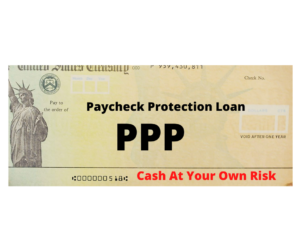 If you took out a paycheck protection loan from the government, be prepared to defend your reputation.
If you took out a paycheck protection loan from the government, be prepared to defend your reputation.
The Paycheck Protection Program, known as PPP, is a major part of the government’s efforts to stimulate the economy. It slates hundreds of billions of dollars in forgivable loans for small businesses around the country and provides valuable financial relief for many desperate and struggling companies. The first round of these loans was completed last week by the U.S. Small Business Administration (SBA), and the second round will start soon. Some companies that are not in distress have received these loans, and the court of public opinion might soon rule against them.
Last week, major news outlets discovered that several public companies, most famously the Ruth’s Chris Steakhouse chain and the Shake Shack restaurants, had received millions of dollars in forgivable loans. The backlash was swift as many voiced their displeasure with “big companies” getting money that was meant for “small businesses.”
I’m not debating the technical aspects of PPP, and I do not begrudge any small business owner from taking out the loan. Uncertainty in the business world is palpable, so even if your business is OK now, it might crater next week. So if you qualify, you qualify (and figuring out the forgiveness part is between you and your accountant.) It’s most likely a prudent move to get the loan if you can, but others might vocally disagree with you.
Last week Shake Shack announced that it would give back its loan. And yesterday, Ruth’s Chris relented and announced that it would be returning its loan as well.
I watched the uproar on social media with great interest. Personally, I think that these companies got a bit of a bad rap, mainly because for most of us, a job is a job. The loans are supposed to be used for payroll and to keep people employed. So if you are a line cook who was laid off, it doesn’t matter if your parent company is publicly traded or owned by “mom and pop.” To me, we should be in favor of all ways to get relief to the line cooks of the world.
But as the treasury secretary pointed out, public companies have access to capital that mom and pop do not. So, while the affiliates of public companies technically qualified for PPP loans, the marketplace of public opinion said loudly that they were taking money that “belonged” to small businesses.
So far, the only big companies we have heard about that took-out the loans are publicly traded, but that’s not for lack of effort from journalists. I saw social media traffic before the loan program was even gaining steam, and journalists were saying things like: “If your business is not really hurt by the coronavirus, you better not take these loans because we will find out.” Prepare to be shamed.Read More




